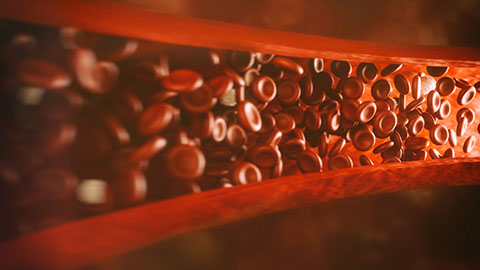
In episode 77, from February 19, 2021, a client with “critical limb ischemia” wants massage while he awaits corrective surgery for an occluded artery. So, we talked about peripheral artery disease and talked about the risks and reasons to be cautious in this situation. In this follow-up episode, we find the client was in better shape than I thought, and the massage therapist shares her treatment choices and rationales for a really hopeful outcome. This is yet another example of how important it is to treat the person, not the diagnosis.
Resources from Episode 77:
Jackson, M. R. et al. “The Consequences of a Failed Femoropopliteal Bypass Grafting: Comparison of Saphenous Vein and PTFE Grafts.” Journal of Vascular Surgery 32, no. 3 (September 1, 2000), 498–505. https://doi.org/10.1067/mva.2000.108634.
Park, K.-M. et al. “Treatment of Failing Vein Grafts in Patients Who Underwent Lower Extremity Arterial Bypass.” Journal of the Korean Surgical Society 83, no. 5 (October 29, 2012): 307–15. https://doi.org/10.4174/jkss.2012.83.5.307.
Stanford Health Care. “Femoral Popliteal Bypass.” Accessed February 18, 2021. www.stanfordhealthcare.org/medical-treatments/f/femoral-popliteal-bypass.html.
Walton, Tracy. “Massage Therapy Pressure Scale.” PDF. Accessed February 18, 2021. www.tracywalton.com/wp-content/uploads/2015/04/Walton-Massage-Therapy-Pressure-Scale-for-WEBSITE.pdf.


This podcast sponsored by:
About Anatomy Trains:
Anatomy Trains is a global leader in online anatomy education and also provides in-classroom certification programs forstructuralintegration in the US, Canada, Australia, Europe, Japan, and China, as well as fresh-tissue cadaverdissectionlabs and weekend courses. The work of Anatomy Trains originated with founder Tom Myers, who mapped the human body into 13 myofascial meridians in his original book, currently in itsfourthedition and translated into 12 languages. The principles of Anatomy Trains are used by osteopaths,physicaltherapists,bodyworkers,massagetherapists,personaltrainers,yoga,Pilates,Gyrotonics,and other body-minded manual therapists and movement professionals. Anatomy Trains inspires these practitioners to work with holistic anatomy in treating system-wide patterns to provide improved client outcomes in terms of structure and function.
Website:anatomytrains.com
Email:info@anatomytrains.com
Facebook:facebook.com/AnatomyTrains
Instagram: instagram.com/anatomytrainsofficial
YouTube:www.youtube.com/channel/UC2g6TOEFrX4b-CigknssKHA
About Coaching The Body:
CoachingTheBody™ is a highly unique approach to therapeutic bodywork that integrates traditional Thai massage techniques, trigger point therapy, and modern neuroscience as a means of efficiently treating pain and restoring normal motion across joints.Manual therapists and movement professionals all over the world have used the CoachingTheBody™ approach to relieve pain, unravel complex conditions, and grow their practices.CoachingTheBody™ offers both in-person and online training, including a full CTB certification program consisting of 7 body area courses, an apprenticeship program,and a growing online course catalog.
Website: coachingthebody.com
Email:admissions@thaibodywork.com
Facebook:facebook.com/CoachingTheBodyInstitute
Instagram:instagram.com/coachingthebody
0:00:00.0 Ruth Werner: Ruth Werner's best-selling book, A Massage Therapist's Guide to Pathology, is a highly regarded comprehensive resource that sets the standard for pathology education. Written for massage therapy students and practitioners, this groundbreaking resource serves up a comprehensive review of the pathophysiology, signs, symptoms and treatment of more than 500 diseases and disorders. Learn more at booksofdiscovery.com. Frozen shoulder is a mysterious condition that many therapists struggle to resolve. Learn how to reprogram chronic pain patterns like frozen shoulder in just one to three sessions by attending a new free web class from Coaching The Body. You'll learn the number one muscle influencing shoulder function and how to unlock it, the controversial reason why Coaching The Body says most shoulder massages are a waste of time, what never to do when treating trigger points, three hidden fiber pairings that set up almost all cases of shoulder pain, and much more. Seating for the free web class is limited. Go to coachingthebody.com/abmpshoulder to register now.
[music]
0:01:26.1 RW: Hi, and welcome to "I Have a Client Who... " Pathology Conversations with Ruth Werner, the podcast where I will discuss your real life stories about clients with conditions that are perplexing or confusing. I'm Ruth Werner, author of A Massage Therapist's Guide to Pathology and I have spent decades studying, writing about and teaching about where massage therapy intersects with diseases and conditions that might limit our client's health. We almost always have something good to offer even with our most challenged clients, but we need to figure out a way to do that safely, effectively and within our scope of practice. And sometimes, as we have all learned, that is harder than it looks. Today, we have something new, an update on a previous podcast. A few weeks ago, we heard from a massage therapist from Auckland, New Zealand, whose client had recently undergone a femoral popliteal bypass. His graft had become occluded and he was awaiting corrective surgery and hoping that massage therapy might help him in the meantime. So in that episode, I talked a little bit about peripheral artery disease and femoral popliteal bypass surgery, which is sometimes called fem pop, and about fem pop failures, which are not that uncommon.
0:02:48.9 RW: The contributor had specifically wondered about working with this client's feet because he was complaining that his foot was so cold, it woke him up at night. So we did a little thought experiment about what factors might lead a massage therapist to feel that working with this client's affected foot might be a bad idea, and what might suggest that it would be okay. I concluded the episode with a recommendation that this massage therapist be very, very, extremely, unbelievably careful about working with this client, because I was concerned that if anything in this graph should break loose and travel downstream, he could be at risk for infarction and extensive tissue damage. I suggested staying within a Walton Pressure Scale of levels one and two, moving only the skin and watching carefully for signs of circulatory function and dysfunction.
0:03:45.8 RW: It felt to me like I was being unusually limiting and cautious about what massage therapy might be appropriate. This is at least partly related to the fact that she used the term critical limb ischemia in her first email to me. And from that description, I visualized someone who was in imminent danger of losing his leg, and I wondered why there would be a long delay in his getting surgery. Well, we've had some news. Since then, I have learned that his situation was not so dire as I had envisioned. This massage therapist based her choices on his general health and resilience, plus the information she was able to get from his physical therapist to create a strategy that had some things in common with what I had foreseen, and in other ways, was really, really different. And because I love to be surprised, especially when I'm over cautious, I thought I'd share this fem pop follow up with you. To start with, we have a few more details about this client. He is 73, diagnosed with Type 1 diabetes in his 40s. He was also diagnosed with vascular disease related to his diabetes, and he has a history of prior renal artery stenosis.
0:05:05.5 RW: His aorta is fine, according to a previous MRI. Before his femoral popliteal occlusion, he was fit and active, but then he had a gradual onset of symptoms in his left leg, including numbness, a cold foot, a decrease in the range of motion in his ankle and cramping in his calf. His fem pop bypass last August gave him some relief until the leg became ischemic three months later. An MRI showed the grafted section of vein had become blocked, and the cramping, pain, numbness and coldness had returned. In the first of their weekly sessions, the massage therapist found that his left foot was purple near the toes, and the rest was white and cold, his muscles and fascia felt tight and solid and his surgical scar had healed well. She began with long, slow, flowing strokes to the client's leg while he was in a semi-reclining position. She started lightly and increased in pressure as things began to loosen up. She also did foot and ankle mobilizations. After the session, she found that his foot had regained some color and was warmer and more mobile, his tissue seemed more supple and the client reported that his leg was easier to move and his foot felt less numb.
0:06:32.9 RW: The massage therapist offered to teach the client's wife how to do this kind of work between sessions. Here's a quote from our contributor, "I was cautious with the first session, but because he'd had no adverse reactions to the massage, I knew I could continue with subsequent sessions and be a bit more brave with my application, but remaining within the level two on the Walton Scale. His physio had also said that because he's active with walking and Pilates, nothing we could do could make his condition worse. Quite a bold statement, but hopefully he knew that I'm fully qualified." So at the second appointment, the client's foot was less purple to start with, and the massage therapist did a similar session to the first, and added some work around the glutes and the hips, including the right side to address pain from compensation patterns in walking. That seemed to be effective as he reported no more hip pain after that session. Also, his left foot and leg were much less pale. The foot was still cooler than the right side, but much warmer than before. In the third session, the client had just had a full physical exam to prepare for his surgery and he was all clear. He's sleeping better, not being kept awake by his cold foot. His wife is giving him nightly massage and his comfort is much improved.
0:07:54.6 RW: His foot is now white and pink, not purple. The massage therapist worked with the scar in his thigh to improve mobility. The client has booked three more sessions, and he and his massage therapist are very happy with his results and his progress. And she adds this, "My biggest frustration is not being in the inner circle with the rest of his health professionals. In New Zealand, as you know, massage therapists are not regulated, and many medical professionals still do not regard massage as a valuable therapy. There's no way I could communicate with his specialist. Luckily, some physios are open to massage and communicating with massage therapists, but I find that most don't share in in-depth detail because they're not aware of what we can do. We have a long way to go, but there is hope." So we have some things to learn here. First, that we cannot get a complete picture of a client's situation from a quick narrative sketch. I would never have put walking and Pilates in the same picture as critical limb ischemia, which may show you my own limits of imagination.
0:09:04.1 RW: So this client is in better condition than I had thought, which is great news for everybody, and his massage therapist met him where he was. Basing her decisions, not on his diagnosis, but on him and his presentation, a lesson to us all and a recurring message from our friend, Tracy Walton. And although this massage therapist heard, "He exercises, so there's nothing we can do to make his condition worse," from his physio, she still exercised caution and conservatism, based on her own observations and knowledge, and that is some good independent thinking right there. This massage therapist is frustrated that she can't have more and better conversations with her client's healthcare providers. It sounds like she got lucky with his physio, his physical therapist, but that more detail and interaction would have been helpful. She feels her profession is undervalued in the healthcare community. Gee, I wonder if anyone else feels the same, and she hopes that this will improve with time. Certainly, having such a successful interaction with a client like this should help to open some doors. Writing up some case notes, if she doesn't wanna do a whole case report could be helpful for future interactions.
0:10:22.1 RW: I wanna congratulate this massage therapist and her client on their successes so far, it took some guts to move forward in a situation like this, but look at what she did, she weighed the risks and benefits, she designed a strategy that maximized benefits and minimized risks. It's not clear when this client's follow-up surgery will take place, but he will go into it in better shape than if he had not sought out massage, and if they can continue to work together afterwards, I bet his recovery is gonna go well too.
0:10:56.5 RW: Hey everybody, thanks for listening to "I Have a Client Who... " Pathology Conversations with Ruth Werner. Remember, you can send me your "I have a client who... " stories to ihaveaclientwho@abmp.com. That's ihaveaclientwho, all one word, all lower-case @abmp.com. I can't wait to see what you send me and I'll see you next time.
0:11:24.3 Speaker 2: Anatomy Trains is excited to invite you to another exciting two day dissection live stream specialty class, Deep Dive into Joints, April 24th and 25th. This advanced dissection live stream education experience is presented by Tom Myers and master dissector, Todd Garcia. In this two-day event, we will examine the blended nature of support for each of the joint areas. This special dissection live stream format allows us to explore more deeply subjects and areas of interest. Visit AnatomyTrains.com for details.